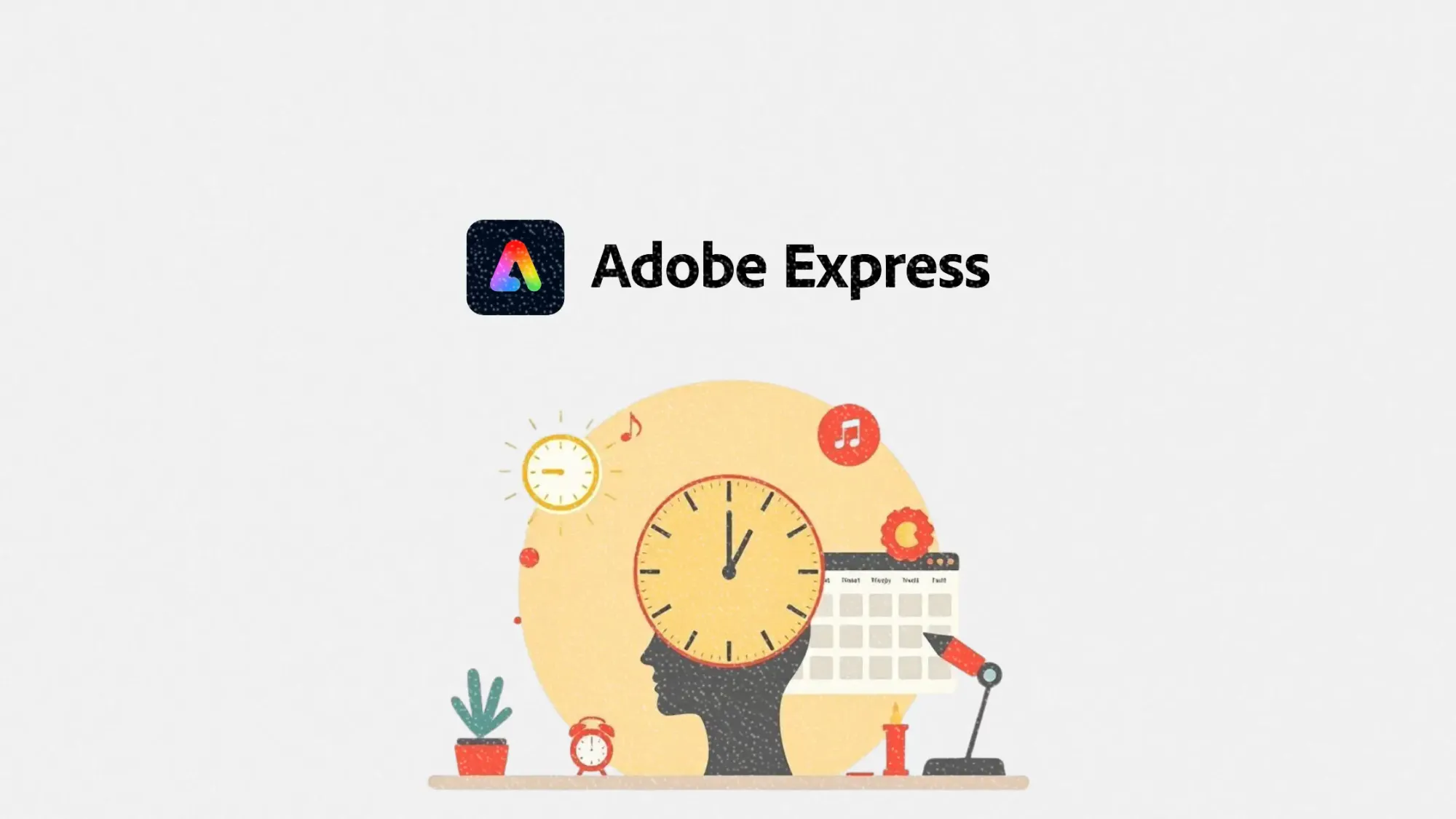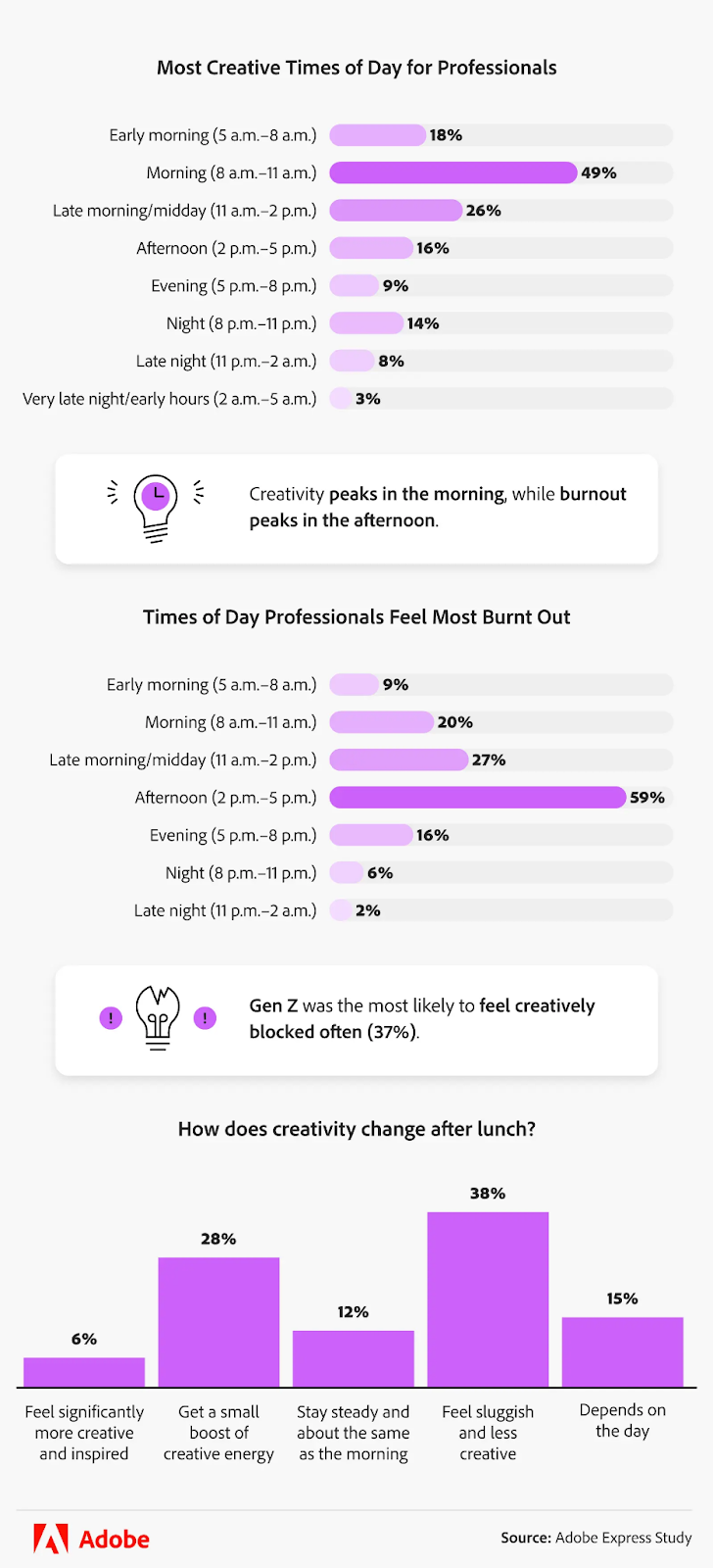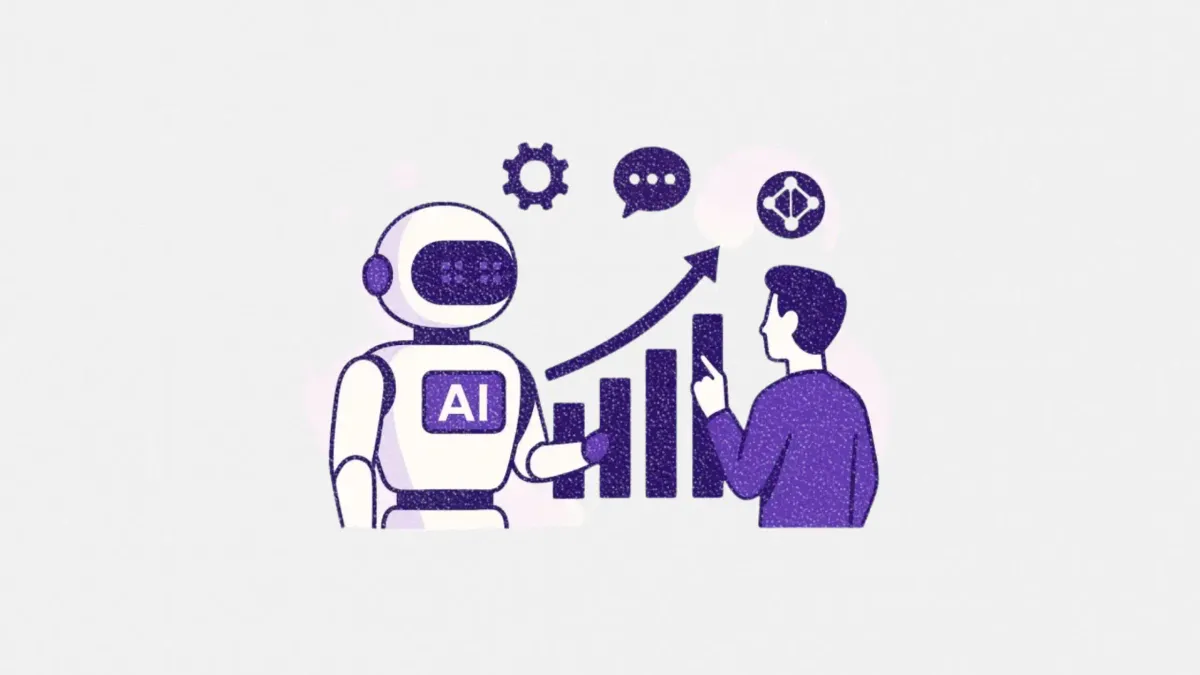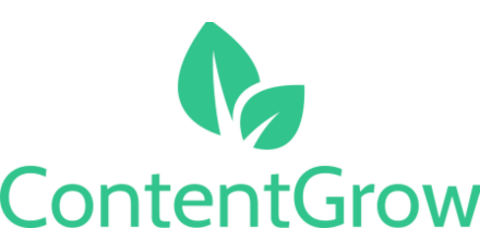When is creativity at its peak? Adobe Express’ global study breaks it down
Adobe Express’ latest data shows when people feel most creative and how marketers can work smarter around it

Most marketers spend hours refining creative work under tight deadlines, but when are we actually at our best creatively?
Adobe’s new study, When Is Creativity at Its Peak?, surveyed over 6,500 professionals across Asia-Pacific, Europe, and North America to uncover when people feel most inspired, where creativity flows most naturally, and how tools like AI are influencing that process.
This article breaks down the key findings and what they mean for marketers, content teams, and creative operations leaders trying to optimize both productivity and output.
Short on time?
Here’s a quick table of contents for easy access:
- What the Adobe study found about peak creativity
- How culture and region affect creativity
- AI's role in creative energy
- What marketers should know

What the Adobe study found about peak creativity
According to Adobe’s research, creativity peaks between 7–11 AM, with productivity gradually declining as the day progresses. Specifically, 34% of respondents said they feel most creative in the morning, while only 13% felt most creative in the evening hours.
Other key findings:
- Tuesdays and Wednesdays are the most creative days of the week
- Home is the top creativity zone for 59% of respondents, followed by the office and coworking spaces
- Music is a leading creativity trigger, helping 41% of respondents get into a creative mindset

These patterns were surprisingly consistent across regions and industries, but certain nuances stood out when digging deeper into demographics and cultural contexts.
How culture and region affect creativity
The study uncovered notable regional variations in what fuels creativity.
- Japanese respondents were more likely to say they felt most creative late at night, which is a contrast to the global morning trend
- In contrast, India, the UK, and the US leaned heavily toward early-morning creative bursts
- Millennials (25–39 years old) showed a preference for early-day creativity, aligning with traditional work hours
- Gen Z (18–24) was more likely to cite evening or night-time creative zones
Adobe also linked these preferences to the flexibility of work environments. Countries and workplaces that offered hybrid or remote setups had higher reported creativity levels. This suggests that control over one’s schedule directly influences creative output.
AI's role in creative energy
One standout insight: more than 60% of respondents said that AI tools help them get into a creative mindset faster.
However, the emotional connection to creativity remains personal. While AI can accelerate ideation, most participants emphasized that authentic inspiration still requires human inputs like mood, environment, and emotional state.
Music, nature, and conversations with peers were all cited as bigger creativity catalysts than tech tools, but AI is clearly becoming part of the creative workflow, especially for time-strapped teams.
For marketers managing multiple campaigns or juggling regional launches, these tools could offer a smart assist, but they are no substitute for real creative thinking.

What marketers should know
Here’s how marketers and creative leaders can apply Adobe’s findings:
1. Time your briefs and reviews strategically
Avoid pushing for creative output in the late afternoon. Schedule brainstorming sessions, concept reviews, and key deliverables for mornings, especially early in the week.
2. Give flexibility where possible
Hybrid and remote models correlate with higher creative satisfaction. Letting teams self-schedule creative tasks around their personal peak hours can boost both morale and output.
3. Integrate AI without losing authenticity
AI tools can help remove creative blocks, but human emotion still drives the best ideas. Use AI to speed up iteration or explore drafts, not to replace human judgment.
4. Account for regional and generational differences
If your campaigns span multiple markets, consider tailoring creative timelines by region. For instance, schedule ideation later in the day for Japan-based teams while keeping early mornings reserved for North American or Indian contributors.
Adobe’s study offers rare data-backed insight into how creativity actually works across time, space, and technology. For marketers, the big takeaway is this: optimize for creativity, not just productivity.
By respecting when and how your teams do their best thinking, you can build more resonant campaigns, support sustainable workflows, and ultimately drive stronger brand performance.





